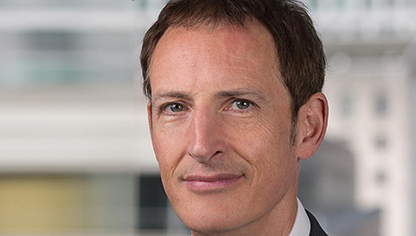Get Focus insights straight to your inbox
There is an odd tension in markets at the moment. Pretty much every survey of clients’ investment intentions carried out by big banks suggests that the majority thinks that riskier assets have further to fall in the short term (up to three months), but will be (potentially substantially) higher in the longer term (end of 2020 onwards).
That leaves us in something of a quandary. Buy now for the long term? Or hold off and wait for lower prices? At least some of the decision-making process can be directed by current positioning. Investors who are substantially underweight risk can begin to deploy cash resources or switch from safer assets; those who are already overweight should probably think twice before doubling down.
We sit pretty close to Neutral at the moment, having decided to take on a little more risk two weeks ago through an increase in our corporate bond weightings. The trouble with hoping (if that’s an appropriate word to use) for lower prices is that they will be the result of either a surge in coronavirus-related deaths or more negative economic outcomes, or a combination of the two.
It’s not clear that any government knows exactly what their exit strategy will be yet.
It is not impossible that we will experience weaker activity even if the case growth slows, because it is feasible that measures such as self-isolation and social distancing will be extended to reduce the risk of a second surge. Is a second (or even third) surge possible? Previous pandemics suggest very much so. It’s not clear that any government knows exactly what their exit strategy will be yet. Frankly, I’m relieved that the responsibility of making such decisions does not fall on my shoulders.
Risks of an extended curtailment of normal activity (either by decree or by choice) seem to be the primary driver behind the latest batch of lower economic forecasts I have seen, continuing the “race to the bottom” I have previously described.
There has also been increasing concern that countries in warmer climes are not enjoying the supposed resilience to the virus that was supposed to be conferred by higher temperatures and level of ultra-violet light. The fact that many of these countries are emerging economies potentially worsens their plight owing to lack of sanitation and under-provided healthcare systems.
Estimates for unemployment are routinely heading into double figures, as are forecasts for government budget deficits this year.
It is not unusual now to see estimates for countries’ gross domestic product to be minus 50% on a quarter-on-quarter (q/q) annualised basis for the April to June period. Even if one divides by four to return to the underlying q/q figure, it’s still a double-digit drop, which is way worse than anything experienced during the financial crisis. Estimates for unemployment are routinely heading into double figures, as are forecasts for government budget deficits this year.
You may well ask, then, why equity indices are rising today. The main reason is the slowing rate of case growth in countries such as Italy and Spain. We often talk about the “second derivative” or rate of change being a prime signal for financial markets. During an economic downturn, for example, once the pace of activity and earnings downgrades starts to decelerate, and often well before the trough of estimates has been reached, shares will start to rise.
The gap can be anywhere from weeks to months, as investors anticipate a return to growth. In the current climate investors have decided that the same signal will come from the pace of the spread of the virus. Once the “S-curve” that we have spoken about begins to flatten, the coast will start to clear. While I have sympathy with this approach, the potential flaw is that the exponential rise in case numbers means that even slowing growth ensures that medical facilities will be overwhelmed. What we really need to see is wider evidence of the number of live cases at least hitting a plateau, then falling and, most importantly, staying lower.
More uncertainty resides in the corporate sector. If “coronavirus” and “social distancing” are leading candidates to be the word/phrase of the year, then, for market participants at least, “withdraws guidance” and “suspends dividend” are right up there too. People often drop stones into a dark well to try to ascertain how deep it is. Economists, strategists and analysts have dropped quite a few so far but still haven’t heard the splash.
That is unnerving. I have previously observed that analysts tend to underestimate the negative effects of operating leverage in a downturn, and this one is not only a lot worse than average but does not exactly adhere to historic models. A modicum of patience is required so that we can observe clearer company data.
The $4bn worth of 3-year bonds that were sold sported a coupon of 11.5% (with a slightly higher yield-to-maturity, given that they were priced below par).
On a brighter note, capital is being made available to some viable companies who need it to survive. Carnival, the cruise operator very much at the sharp end of the virus threat, last week raised $7 billion from a combination of debt and equity. However, there was a price to pay for such a lifeline. The $4bn worth of 3-year bonds that were sold sported a coupon of 11.5% (with a slightly higher yield-to-maturity, given that they were priced below par). That is the sort of number one often sees described as “eye-watering”.
Yum Brands (owner of KFC and Pizza Hut) was the first to tap the High Yield market following the recent sell-off, paying 7.75% for five-year funds. Last year the company paid 4.75% for ten years. Companies can make it through this, but they will be carrying a heavier burden of liabilities into an uncertain future. More equity will also be raised via placings and rights issues, shoring up those short of cash. However, without the offsetting benefit of share buybacks, which are firmly off the agenda for now, a sharp rise in equity issuance could weigh on markets for a while.
Others will not be so lucky. In the UK, Carluccio’s, Brighthouse and Cath Kidston have already bitten the dust, and maybe not before time. Debenhams, it would appear, is not far behind. All are highly leveraged businesses with limited asset backing in the hands of private equity, and all have previously been through various forms of rescue. The latter falls into the category of businesses that would not be created today, and therefore exists as an anachronism, however harsh that might sound (all my university bed linen came from Debenhams – and some it still serves as dust/painting sheets to this day!).
There are a lot of “zombie companies” in the world, businesses that have been hanging on by their fingernails for too long, sustained by nothing more than cheap debt, investors reaching for yield, and the desire of their owners not to crystalise a loss. The lack of a Schumpeterian cycle of “creative destruction” is often cited as one reason for the lack of productivity growth in the last cycle. Maybe something good will come out of all this, although I fear not without a lot of pain in the short term for many.
About the author

John Wyn-Evans
Investment strategist
John is Head of Investment Strategy for Investec Wealth & Investment UK, is a member of the Global Investment Strategy Group, and is Chair of the Investec & Investment UK Asset Allocation Committee. John graduated from Exeter University in Modern Languages in 1984. He spent 27 years as an institutional stockbroker with Merrill Lynch and Lehman Brothers, before moving to investment management in 2011 and joining Investec in 2013. John is an Everton FC supporter.




